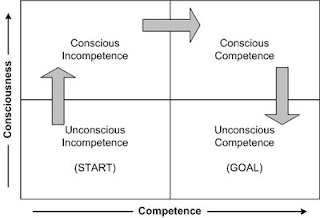How important is it for teachers to know subject matter content? Pedagogical content? Curriculum content? According to Shulman (1986) and Mishra and Koehler (2006), all three questions raised (known as PCK) play an integral part in teacher education programs. Is one more important than the other? Should teachers focus on pedagogy more as opposed to subject knowledge? This is where there is a divide between scholars, school districts, teachers and students alike. They should not be separated from one another, but interwoven.
For example, in January of this year, the Vancouver School Board (VSB) had introduced an aptitude test for potential teachers. On Make a future website, it states:
The multiple choice, timed assessment is called EPI: Educators Professional Inventory and it covers three domains: teaching skills, attitudinal factors and cognitive ability. You have 90 minutes to complete the test but on average, it takes about 45 minutes to complete. The assessment is from the U.S. and occasionally will use educational terms that are not used in Canada. For example, several questions refer to the Standards which means the key concepts and skills in the curriculum. You may want to have a pen and paper ready before you begin the test.
Apparently, these types of test were conducted for incoming teachers as far back as 1875. Is this how we still measure teacher’s abilities when it comes to subject knowledge, pedagogy and curriculum content? More recently in the United States of America, such tests don’t mention subject content, but more about cultural awareness, management, assessment, educational policies and procedures (Shulman, 1986). At the heart of PCK is the way in which subject matter is transformed for teaching. This happens when teachers interpret the subject matter and finds alternative ways to showcase it and make it accessible for students (Mishra & Koehler, 2006). With this, comes technology.
Added to the mix is technology, or TCPK. Educators must know how technology relates to content and pedagogy. Working in the 21st century, technology is always one step ahead of the game, with students knowing more about technology than teachers do half the time. I think it’s extremely important for educators to take it upon themselves. They need to be informed about the importance of not just the subject matter they teach, but the manner in which the subject matter can be changed with technology (Mishra & Koehler, 2006).
An example I will share of teaching a particular concept, is the scientific method. Today was the day where the 2 science classes I teach showcased their science fair projects to other classes. This was the first time I took on 55+ kids in one setting and I couldn’t be happier with their results. What I think worked well, was scaffolding the project of breaking down the steps that are involved in the scientific method week by week. One week, we would just focus on coming up with a testable question, then the next week focus on their hypothesis etc. The students were able to manage their time better this way and I believe this produced better results in their overall project display.
Mishra, P., & Koehler, M. J. (2006). Technological pedagogical content knowledge: A framework for teacher knowledge. Teachers college record, 108(6), 1017.
Shulman, L. S. (1986). Those who understand: Knowledge growth in teaching. Educational researcher, 15(2), 4-14.
Make A Future. Retrieved from: https://makeafuture.applytoeducation.com/Applicant/AttJobPosting.aspx?JOB_POSTING_ID=2b9404f1-4d21-491c-9727-6649f140e2d4&PAGE=1&locale=en&MAF=1
